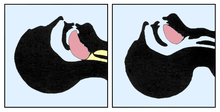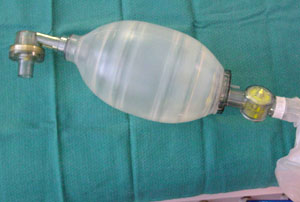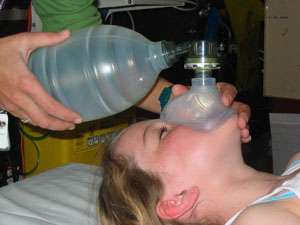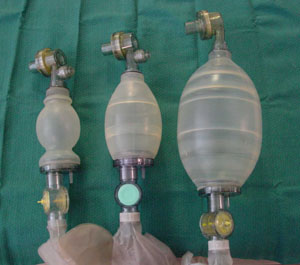| Admissions | Accreditation | A to Z Degree Fields | Booksellers | Catalog | Colleges | Contact Us | Continents/States/Districts | Contracts | Distance Education | Emergency | Examinations | Forms | Grants | Hostels | Honorary Doctorate degree | Human Services | Investment | Instructors | Login | Lecture | Librarians | Membership | Observers | Professional Examinations | Programs | Progress Report | Recommendations | Research Grants | Researchers | Students login | School | Search | Seminar | Study Center/Centre | Sponsorship | Tutoring | Thesis | Universities | Work counseling |
|
Does it make sense to have neurosurgeons, anesthetists, and administrators relaxing in hospitals and offices while a patient dies on the spot without a neurosurgeon, anesthetist, or administrators getting involved in enhancing on-the-spot-medical diagnosis and treatment? Is their remuneration justified? On December 3, 2011, 24-year-old Tariq Ahmad Bhat from Nowhatta, Srinagar Kashmir, died after sustaining a head injury from being assaulted. How could this death have been prevented? On the spot diagnosis and treatment. Prevention of violence. Here are guidelines to diagnose and treat such cases on the spot. Is there a recent history of traums? When, where, and how did the trauma occur? Is the patient in coma? Is there distress of airway, breathing, or circulation? Yes. What is the diagnosis for this patient? Head injury with coma with respiratory distress. How should you have treated this patient? You should have first put patient in a supine position. What is a supine position? Someone in the supine position is lying on his or her back. What does a supine position look like? 
Is there a distress of airway or breathing? If yes, follow these guidelines. Airway management I. Manual methods
Jaw thrust III. Bag-Valve-Mask (BVM) IV. Endotracheal intubation I. Manual methods
Jaw thrust Head tilt/Chin lift 
Here are further guidelines. Jaw thrust Here are further guidelines. II. Oral airways Put an oropharyngeal airway in the mouth of a patient in coma with respiratory distress. How does an oropharyngeal airway look like? 
 What does a Bag-Valve-Mask (BVM) look like? 


Here are further guidelines. What are the signs of airway obstruction? 1. Agitation or fidgeting (Hypoxia/hypercapnia produces agitation/drowsiness.) 2. Bluish color to the skin (Cyanosis) 3. Changes in consciousness 4. Choking 5. Confusion 6. External signs of injury to head, face, mouth, mandible or neck 7. Difficulty breathing 8. Dysphonia 9. Decreased breath sounds in the lungs 10. Gasping for air 11. Low SpO2 12. Panic 13. Paradoxical movement of the chest and abdomen 14. Rising respiratory rate 15. Restlessness 16. Rapid, shallow, or slowed breathing 17. Stridor - extrathoracic obstruction. (e.g. pharynx, larynx, upper  trachea) 18. Snoring, Gurgling, Noisy breathing 19. Tachycardia. Hypoxia initially produces tachycardia then bradycardia (a sign of imminent death). 20. Use of accessory muscles, sternal, intercostal, subcostal recession 21. Unconsciousness 22. Visible swelling of tongue, pharynx or neck 23. Wheeze or prolonged expiration - intrathoracic obstruction. (e.g.  trachea or bronchi) When should you do on-the-spot endotracheal intubation? Airway obstruction persists despite oropharyngeal (Guedel) airway for definitive airway stabilisation; Adequate ventilation not possible via bag and mask ventilation; Needs definitive airway protection (from blood, vomitus, foreign bodies); Unresponsive to pain GCS<9; Evidence of significant head injury (eg abnormal posturing); Needs prolonged ventilation; If Glasgow coma scale is 9 or less with airway obstruction, even with gag reflex, you should intubate the patient. Do you know how to calculate Glasgow coma scale? How do you intubate a patient in coma with Glasgow coma scale less than 9 with gag reflex in respiratory distress? Here are further guidelines. http://www.qureshiuniversity.com/endotrachealintubation.html |
|
Establish a peripheral intravenous access for the patient. Peripheral Intravenous Access What items do you need to establish peripheral intravenous access? When is peripheral intravenous access required? What are the types of IV catheters? What are age-specific IV catheter requirements? What are the different type of intravenous fluids for human needs? What potential sites should you utilize for human peripheral intravenous access? How should the patient be positioned during peripheral intravenous access? When should you start an on-the-spot intravenous line? Here are further guidelines. http://www.qureshiuniversity.com/intravenousline.html When should you start an on-the-spot intravenous line? Is there hypotension due to blood loos? Do you think there is neurogenic shock after trauma? If yes, follow these guidelines. Here are further guidelines. If there is blood loss with hypotension. In case of cardiopulmonary arrest. Cardiopulmonary resuscitation if required. The nearest hospital with critical care is 20 minutes by vehicle. In case of head injury with coma, prolonging diagnosis and treatment for 20 minutes may cause patient to die. That is what happened in this case. Patient died even though seen by a neurosurgeon and an anesthetist. Medical emergency diagnosis and treatment of trauma with coma with respiratory distress, or imbalance in circulation, should happen within 4-6 minutes of occurrence or report of a medical emergency. Is that clear? Do you have any questions for me? Questions you need to answer about this case This is in context of a trauma patient on December 3, 2011, 24-year-old Tariq Ahmad Bhat from Nowhatta, Srinagar, Kashmir, who died. Who among medical doctors first evaluated the patient? What was the day, date, time, and exact location where medical doctor or doctors evaluated the patient? How much time had elapsed between when the trauma occurred and medical doctors evaluated the patient? What were the findings from the medical doctors who first evaluated the patient? What was the diagnosis and treatment when medical doctors evaluated the patient after trauma? How was the patient transferred to the hospital after trauma? Who accompanied the patient to the hospital? How was patient positioned in the vehicle? Who is the block medical officer of the area? Who is the chief medical officer of the area? What did he file in his report? What did the police officer file in his report? What is the profile of all medical doctors who evaluated this patient? What are the duties of police in this scenario? What are the duties of a prosecutor in this scenario? What trauma cases need to be put on a ventilator? How should you configure a ventilator for a trauma patient? |
